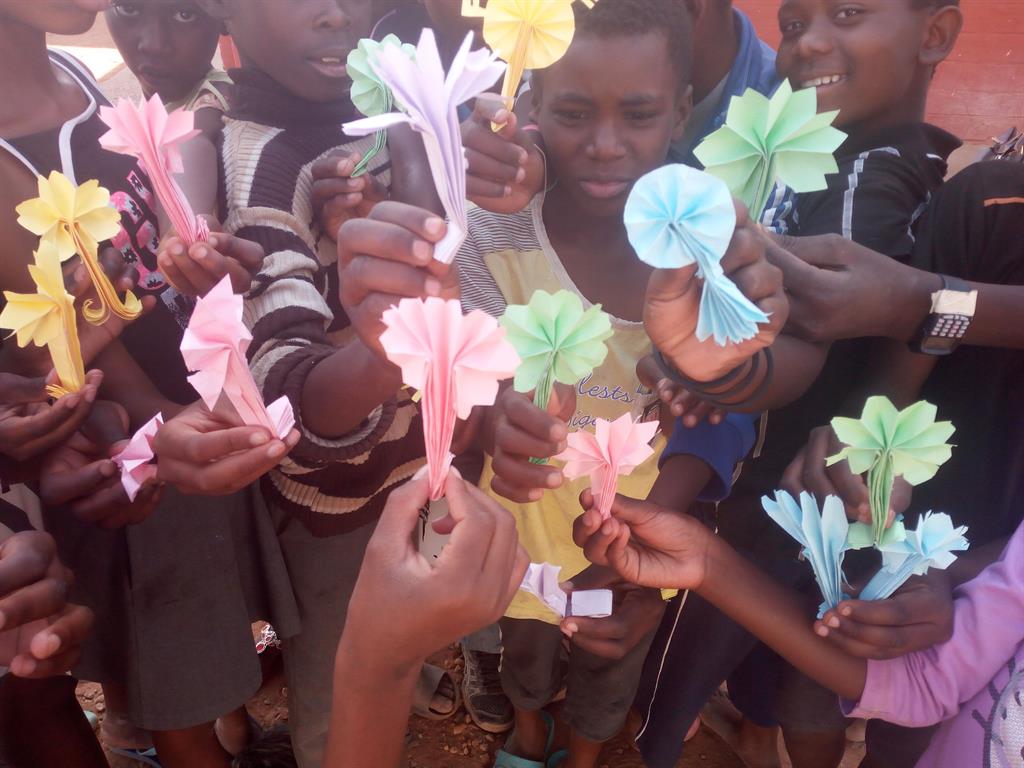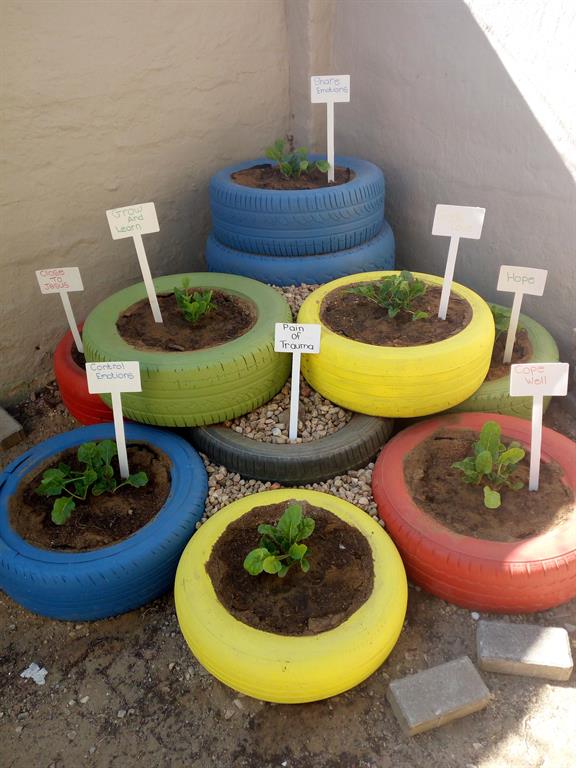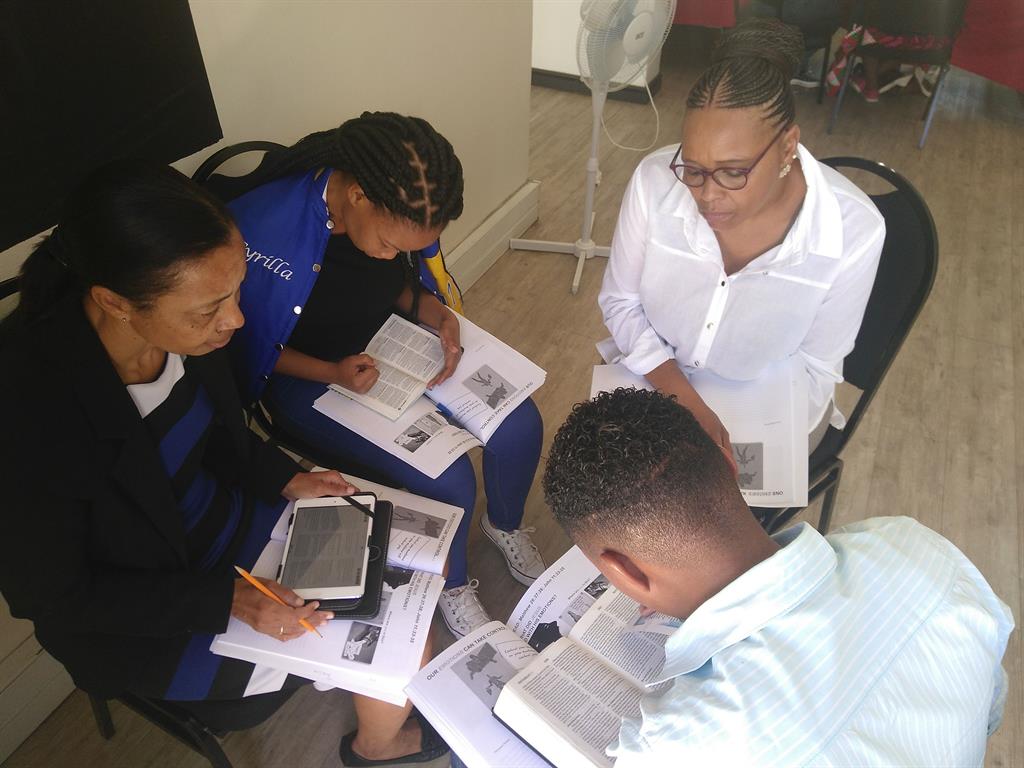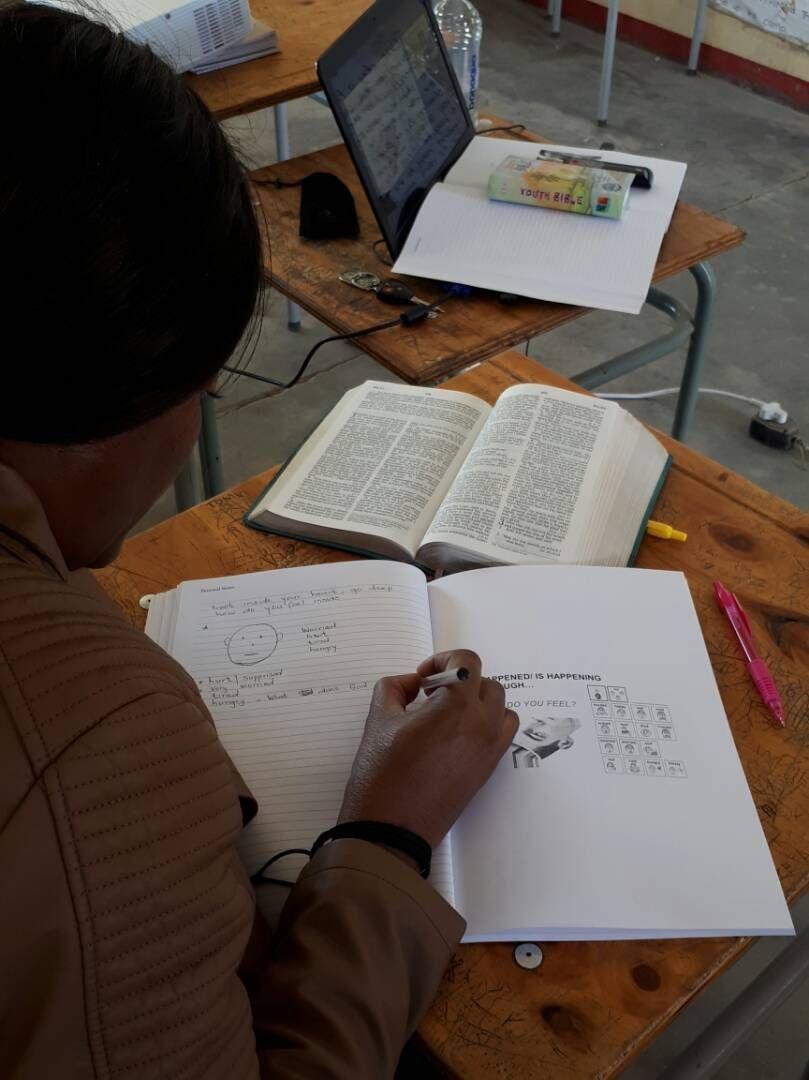The simbolism of colour
Having a community support base plays a big role in the healing process of people after a traumatic event.
Henriette Lamprecht - The emotional pain people in our communities are suffering, is becoming more. Additionally many people are also traumatised on a secondary level by observing or hearing about the trauma of others. The effects of trauma in Namibia has far-reaching consequences for people’s work performance, relationships and lifestyles, says Dr Schalk Botha, director of the Trauma Healing Network (THN).
“Research has found adults and children are generally not well equipped to effectively deal with traumatic experiences in their lives. They were not equipped from childhood with the necessary coping skills to process trauma and then being able to carry on with their lives after the traumatic experience,” Schalk explains.
As a result the effects of trauma influences their daily lives at home, at work, at school and especially in relationships. Many factors play a role, but often it is this lack of equipping that leads to negative coping strategies for handling emotional pain.
According to Schalk many traumatised people in Namibia often do not receive effective help because support services are not readily available and often not affordable to everyone.
The most important goal of the Trauma Healing Network is to through an effective and practical program, bring healing as well as the skills to be prepared to handle trauma from a biblical perspective. Although the Bible does play a large role in this process, all people with trauma are included and not only those of Christians.
“Most important is to cultivate a community which is not only able to handle their own trauma effectively, but which can also form a mutual support base. Research has shown that having a community support base plays a big role in the healing process of people after a traumatic event.”
According to Schalk particular attention is paid to children who need to be prepared for life and need to be equipped to be able to master trauma in their lives.
He explains trauma is a sudden, unexpected event that happens in a person’s life including an accident, suicide or the death of a loved one. It also refers to what happens inside the person’s body.
According to him there is a difference between an ordinary, wider use of the term trauma and the more academic use thereof.
“The ordinary, wider use includes all life’s difficulties, while the more academic use focuses more on near-death experiences, although a distinction can be made between big T- and small t-traumas. The former refers to near-death experiences, while the latter refers to traumas that are still very disruptive and painful, but not necessarily near-death experiences, like divorce or the death of a loved one.”
People can also become traumatized on a secondary level by exposure to the trauma of others without experiencing the trauma themselves by bearing witness. People’s experience of an event as traumatic will differ according to the meaning they attach to it which is based on the conditioning and learning processes they had been exposed to since childhood and their experience of life.
Not only have different people different experiences of trauma, but different people may also have different reactions to trauma, says Schalk.
“Trauma affects us because it is locked up in the body’s nervous system, which may easily make one feel jumpy, anxious, edgy, panicky, tense and uneasy, even long after a traumatic event.”
As long as your trauma is still active in the body, you will again experience physical arousal the moment you are reminded of what happened, he explains.
“What is very difficult for traumatized people, is their experience of triggers. Triggers work automatically and they lead automatically to physical arousal, emotions and various reactions. This places the person immediately back into the trauma situation (backslide), resulting in the person becoming over-focused and over-engaged in the trauma again.”
This triggers the same arousal in the body as during the time of the trauma, says Schalk, coinciding with a rollercoaster of emotions such as anger, guilt and sadness.
Trauma “forces” people on a difficult and uncomfortable journey which is not always predicable in outcomes, he explains.
“The challenge is to make sure this journey eventually leads to an experience of healing.
It is important to know that a traumatized person will never get rid of the memories of the trauma event, namely the heart wound.
“There will always be triggers that act as reminders. A person who has processed the trauma, has effectively managed the trauma.”
THN incorporates the use of colours with the pain caused connected to the grey of a tyre or the pod of a camelthorn.
“Trauma can take the colour out of people’s lives by bringing pain, chaos and damage in various areas of life. It may even feel as if you are ready for a rubbish heap as happens with old, used and damaged tyres.”
The grey colour, thus, indicates how the turmoil of trauma can rob us of the inner peace that God gives us in Christ. The Bible refers to this peace as Shalom which means that a person is experiencing a state of joy and happiness that includes all good things that make it possible to move forward in life and to live life to the fullest.
Helping people to deal effectively with their trauma, THN teach them the necessary resilience skills by adding colour to their lives: Yellow – Hope in suffering (Why me, Lord?), Blue – Emotional Control (What do I do with my emotions?), Red – Coping Strategies (How do I handle my difficulties?), Green – New Growth (How do I grow through my pain?)
The simbolism of each colour is connected to an old tyre, which is painted during the respective lessons. People can then plant something in the tyres which is useful in their homes: spinach, herbs, flowers or other vegetables. The growth of the little garden represents the healing process; consequently when someone tends his/her garden, they are reminded of the simbolism of the different colours. When there are visitors, the healing process can also be shared as a testimony. The painted tyres are placed in the front garden; in this way, personal responsibility for one’s own healing process is represented visibly and concretely.
According to Schalk the first step to handle a traumatic situation is to accept it and face the changes, making the decision to deal with it as good as possible.
“Always be aware of your emotions and have healthy outlets without allowing them to build up. Fill your mind with positive content and also see the growth opportunities in the difficulties.”
Make sure you have healthy coping methods in place, including meaningful activities, focus areas and people you can hold on to, helping you to persevere.
“Besides a good support system, we need to take up the responsibility to put the necessary resilience skills into practice so that we can journey through these times as good as possible.” – [email protected]; Facebook: Trauma Healing Network
“Research has found adults and children are generally not well equipped to effectively deal with traumatic experiences in their lives. They were not equipped from childhood with the necessary coping skills to process trauma and then being able to carry on with their lives after the traumatic experience,” Schalk explains.
As a result the effects of trauma influences their daily lives at home, at work, at school and especially in relationships. Many factors play a role, but often it is this lack of equipping that leads to negative coping strategies for handling emotional pain.
According to Schalk many traumatised people in Namibia often do not receive effective help because support services are not readily available and often not affordable to everyone.
The most important goal of the Trauma Healing Network is to through an effective and practical program, bring healing as well as the skills to be prepared to handle trauma from a biblical perspective. Although the Bible does play a large role in this process, all people with trauma are included and not only those of Christians.
“Most important is to cultivate a community which is not only able to handle their own trauma effectively, but which can also form a mutual support base. Research has shown that having a community support base plays a big role in the healing process of people after a traumatic event.”
According to Schalk particular attention is paid to children who need to be prepared for life and need to be equipped to be able to master trauma in their lives.
He explains trauma is a sudden, unexpected event that happens in a person’s life including an accident, suicide or the death of a loved one. It also refers to what happens inside the person’s body.
According to him there is a difference between an ordinary, wider use of the term trauma and the more academic use thereof.
“The ordinary, wider use includes all life’s difficulties, while the more academic use focuses more on near-death experiences, although a distinction can be made between big T- and small t-traumas. The former refers to near-death experiences, while the latter refers to traumas that are still very disruptive and painful, but not necessarily near-death experiences, like divorce or the death of a loved one.”
People can also become traumatized on a secondary level by exposure to the trauma of others without experiencing the trauma themselves by bearing witness. People’s experience of an event as traumatic will differ according to the meaning they attach to it which is based on the conditioning and learning processes they had been exposed to since childhood and their experience of life.
Not only have different people different experiences of trauma, but different people may also have different reactions to trauma, says Schalk.
“Trauma affects us because it is locked up in the body’s nervous system, which may easily make one feel jumpy, anxious, edgy, panicky, tense and uneasy, even long after a traumatic event.”
As long as your trauma is still active in the body, you will again experience physical arousal the moment you are reminded of what happened, he explains.
“What is very difficult for traumatized people, is their experience of triggers. Triggers work automatically and they lead automatically to physical arousal, emotions and various reactions. This places the person immediately back into the trauma situation (backslide), resulting in the person becoming over-focused and over-engaged in the trauma again.”
This triggers the same arousal in the body as during the time of the trauma, says Schalk, coinciding with a rollercoaster of emotions such as anger, guilt and sadness.
Trauma “forces” people on a difficult and uncomfortable journey which is not always predicable in outcomes, he explains.
“The challenge is to make sure this journey eventually leads to an experience of healing.
It is important to know that a traumatized person will never get rid of the memories of the trauma event, namely the heart wound.
“There will always be triggers that act as reminders. A person who has processed the trauma, has effectively managed the trauma.”
THN incorporates the use of colours with the pain caused connected to the grey of a tyre or the pod of a camelthorn.
“Trauma can take the colour out of people’s lives by bringing pain, chaos and damage in various areas of life. It may even feel as if you are ready for a rubbish heap as happens with old, used and damaged tyres.”
The grey colour, thus, indicates how the turmoil of trauma can rob us of the inner peace that God gives us in Christ. The Bible refers to this peace as Shalom which means that a person is experiencing a state of joy and happiness that includes all good things that make it possible to move forward in life and to live life to the fullest.
Helping people to deal effectively with their trauma, THN teach them the necessary resilience skills by adding colour to their lives: Yellow – Hope in suffering (Why me, Lord?), Blue – Emotional Control (What do I do with my emotions?), Red – Coping Strategies (How do I handle my difficulties?), Green – New Growth (How do I grow through my pain?)
The simbolism of each colour is connected to an old tyre, which is painted during the respective lessons. People can then plant something in the tyres which is useful in their homes: spinach, herbs, flowers or other vegetables. The growth of the little garden represents the healing process; consequently when someone tends his/her garden, they are reminded of the simbolism of the different colours. When there are visitors, the healing process can also be shared as a testimony. The painted tyres are placed in the front garden; in this way, personal responsibility for one’s own healing process is represented visibly and concretely.
According to Schalk the first step to handle a traumatic situation is to accept it and face the changes, making the decision to deal with it as good as possible.
“Always be aware of your emotions and have healthy outlets without allowing them to build up. Fill your mind with positive content and also see the growth opportunities in the difficulties.”
Make sure you have healthy coping methods in place, including meaningful activities, focus areas and people you can hold on to, helping you to persevere.
“Besides a good support system, we need to take up the responsibility to put the necessary resilience skills into practice so that we can journey through these times as good as possible.” – [email protected]; Facebook: Trauma Healing Network











Comments
Namibian Sun
No comments have been left on this article